
My first hairy root!
25.11.2025 17:28 — 👍 7 🔁 0 💬 0 📌 0@nataliagupa.bsky.social
Postdoc @salkinstitute. pattern recognition receptors, small peptides, proteases, and MPMI. Alumnus @UWbiology USDA-NIFA predoctoralfellow, @Uniandes @CienBiolAndes

My first hairy root!
25.11.2025 17:28 — 👍 7 🔁 0 💬 0 📌 0Thank you, Heike!
06.11.2025 23:37 — 👍 0 🔁 0 💬 0 📌 0Now that Im finally here, I'm excited to announce that I've joined @salkinstitute.bsky.social as a postdoc with @lmueller.bsky.social Keep your eyes open for everything AMF symbiosis, peptide biogenesis, and the apoplast!
06.11.2025 21:02 — 👍 19 🔁 5 💬 3 📌 0I am thrilled to share the peer reviewed version of our work on how the circadian clock gates In11-induced responses to tightly regulate induced antiherbivore responses in legumes. onlinelibrary.wiley.com/doi/10.1111/pc…
23.10.2025 21:18 — 👍 2 🔁 1 💬 0 📌 0The work from my MSc with @silviarestrepo in collaboration with @dromius.bsky.social is finally out. We used an integrative approach to follow Phytophthora betacei along while infecting tree tomato. This was in my back burner during my Ph.D, and it materialized thanks to @epiplantpath.bsky.social 🥳
18.09.2025 06:51 — 👍 5 🔁 2 💬 0 📌 0Microscopical and molecular characterization of the infection cycle of Phytophthora betacei during disease development on tree tomato (Solanum betaceum). https://www.biorxiv.org/content/10.1101/2025.09.11.675658v1
17.09.2025 15:07 — 👍 2 🔁 3 💬 0 📌 1
More fruits of studying natural variation in common bean (Phaseolus vulgaris): an interesting genetic basis for insensitivity to caterpillars' In11 elicitor 🐛
Our new bioRxiv preprint from star technicians Brian Behnken and Wesley George below 🧵
www.biorxiv.org/content/10.1...
Thanks, Sagar! I'm looking forward to the fall!
02.08.2025 02:38 — 👍 1 🔁 0 💬 0 📌 0I am incredibly proud of this work that was the result of collaborative science with chemical ecology experts Betty Benrey and Ted Turlings at @UniNeuchatel!
01.08.2025 21:30 — 👍 1 🔁 0 💬 0 📌 05. We conclude that INR is required for the emission of In11-induced volatile blends that attract natural predators to plants experiencing herbivory!
01.08.2025 21:28 — 👍 1 🔁 0 💬 1 📌 0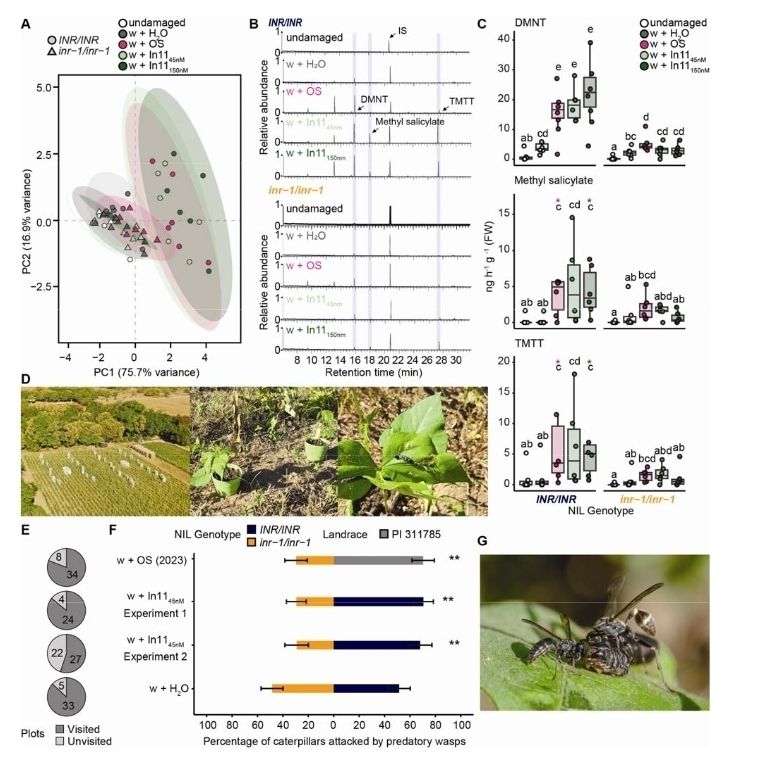
4. And the crown jewel: We took our NILs to a field in Mexico where we observed a 40% reduction in wasp attacks to caterpillars pinned to inr-1/inr-1 lines in an In11-specific manner.
01.08.2025 21:26 — 👍 1 🔁 0 💬 1 📌 0
3. We generated common bean near-isogenic lines with INR/INR or inr-1/inr-1 genotypes and demonstrated reduced direct antiherbivore defenses .
01.08.2025 21:26 — 👍 1 🔁 0 💬 1 📌 0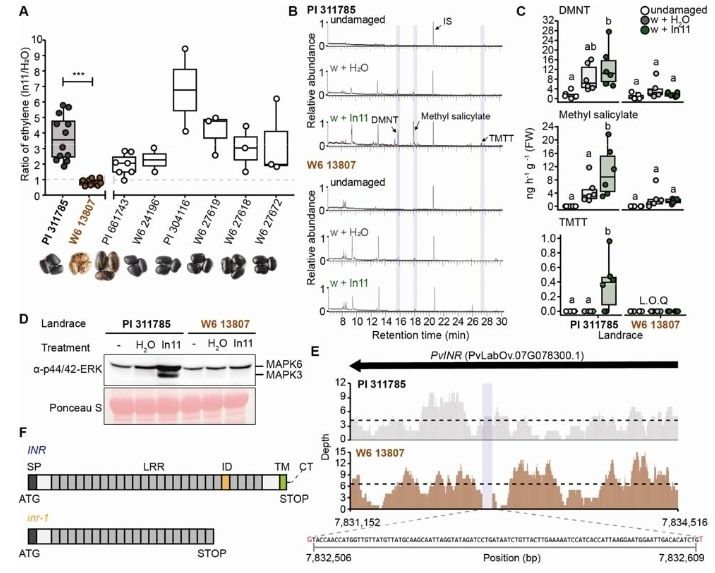
2. We leveraged natural variation in response to the HAMP inceptin (In11) in common bean to identify a non-responsive landrace with a L.O.F deletion in the INR gene that we termed inr-1.
01.08.2025 21:25 — 👍 1 🔁 0 💬 1 📌 0I am thrilled to share the 2nd chapter of my PhD with @adsteinbrenner.bsky.social In collaboration with @tiszapatrick we demonstrated that the LRR-RLP INR is the missing molecular link between caterpillar recognition and predatory wasp recruitment in the field. A thread 1/6
01.08.2025 21:25 — 👍 32 🔁 17 💬 2 📌 1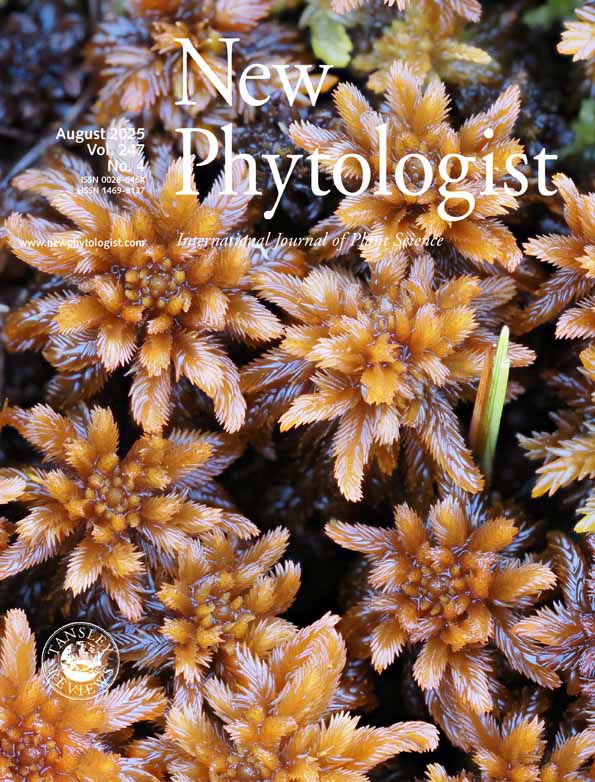
How do plants detect insect eggs ? 🌱🦋
Our new paper on GLR2.7 and its role in plant defense responses to insect eggs is now out in @newphyt.bsky.social
Big thanks to the Reymond Lab @unil.bsky.social and our collaborators !
nph.onlinelibrary.wiley.com/doi/10.1111/...
This will be my closing post for this #2025ISMPMI series. If you're a society member, you have access to ISMPMI rewind and can watch any talk the speaker agreed to have recorded. See you in Jeju, Korea in 2027!
17.07.2025 17:42 — 👍 4 🔁 1 💬 0 📌 0
First, work from Chang-Bao Li and Chuanyou Li (Shandong Ag U) on regulation of SYR1 receptor.
The paralog SYR2 is an induced negative regulator w/ lower binding affinity.
@nataliagupa.bsky.social highlighted that the module is only found in Solanoideae
www.sciencedirect.com/science/arti...
Also unpublished single nuclei and spacial transcriptomics data showing cool candidate genes important for the interaction!
17.07.2025 17:18 — 👍 0 🔁 0 💬 0 📌 0We recently wrote two Preview articles of exciting MPMI papers in Mol Cell and Dev Cell.
Two surprising cases showing different ways to regulate immune receptors in plants -- the cell surface LRR-RK, SYR1 and the intracellular NLR DM2
Short summaries below 🧵🌱 #2025ISMPMI
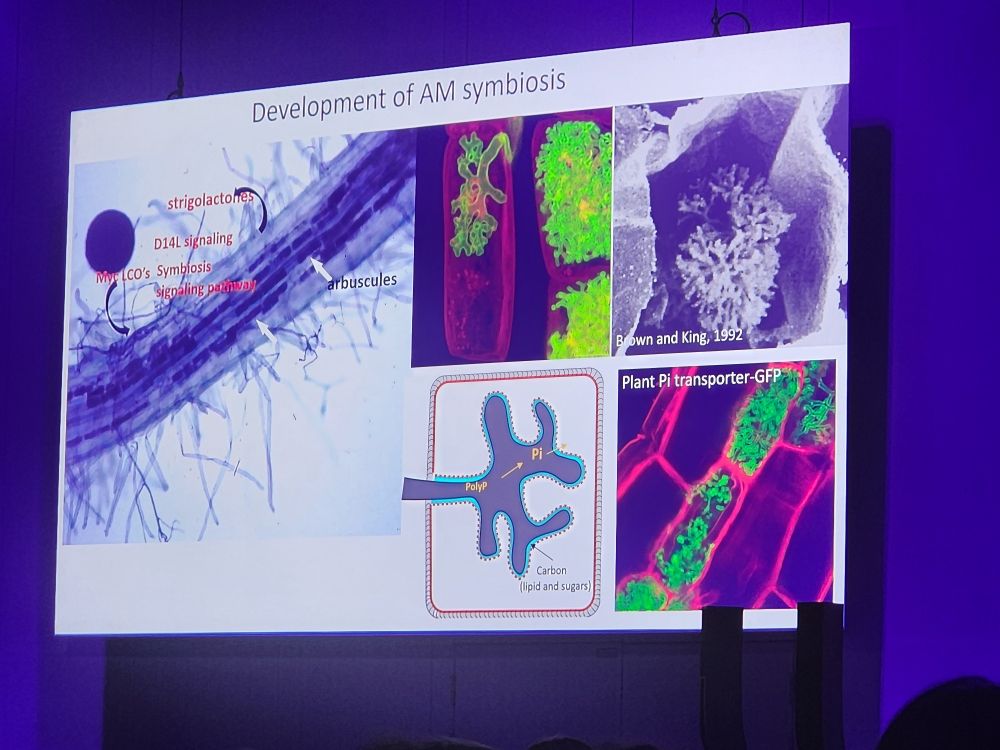
Maria Harris closing #2025ISMPMI with the "most important plant-microbe interaction on earth".
CKL1 and CKL2 kinanses locate to the periarbuscular and plasma membranes during AMF symbiosis and their kinase activity is key for regulating downstream lipid biosynthesis.
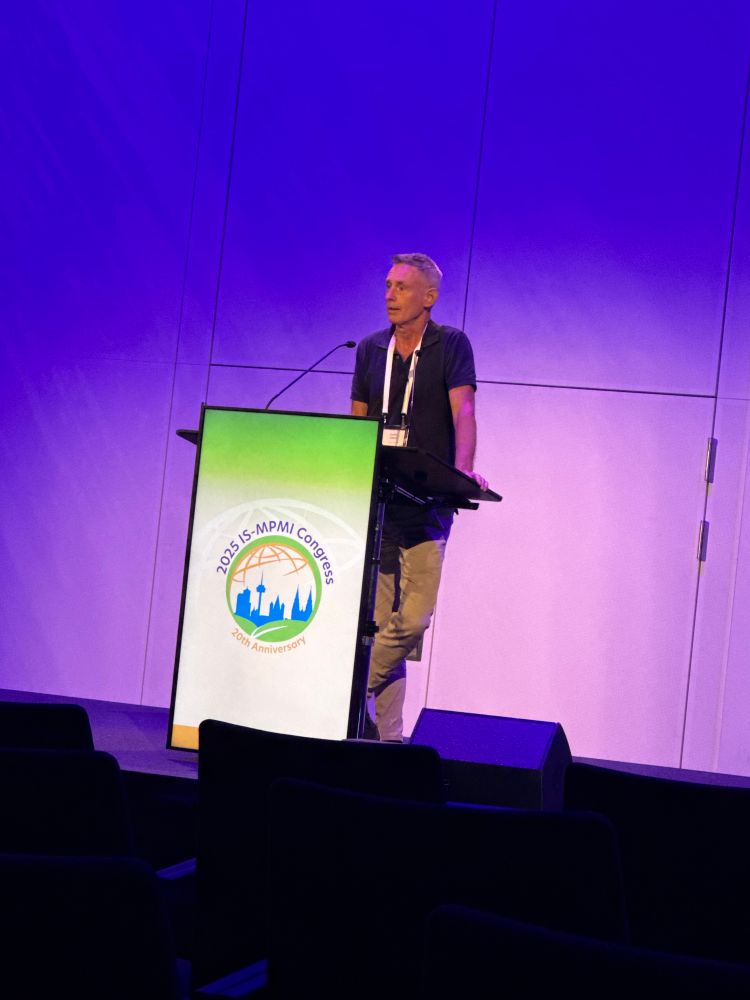
A man giving a talk at a lectern with the MPMI logo
@cornepieterse.bsky.social shows off the incredible automated growth and phenotyping setup with the Hades in vitro root system which “loves microbes”. Incredible throughput.
Link: www.npec.nl/phenotyping-...
#2025ISMPMI
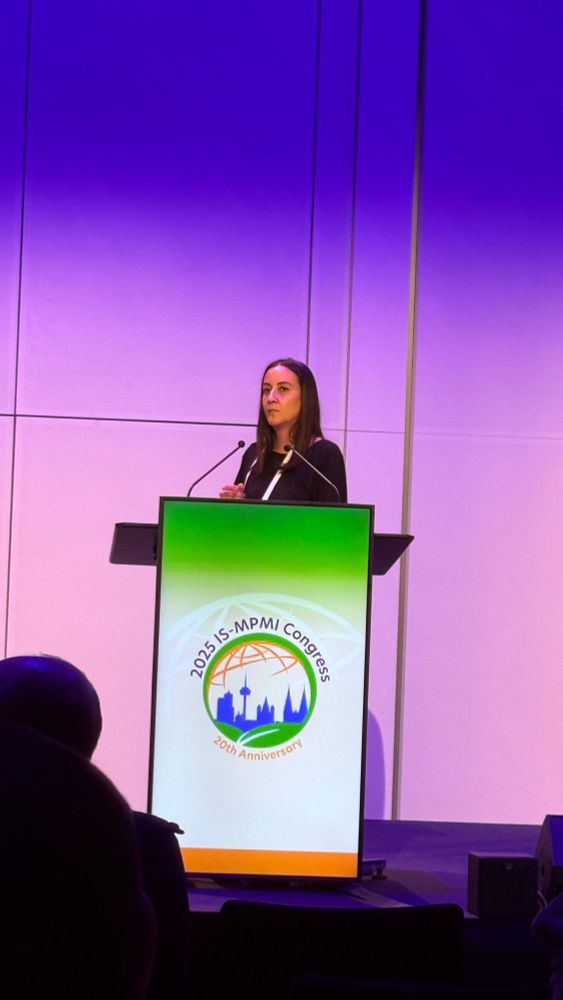
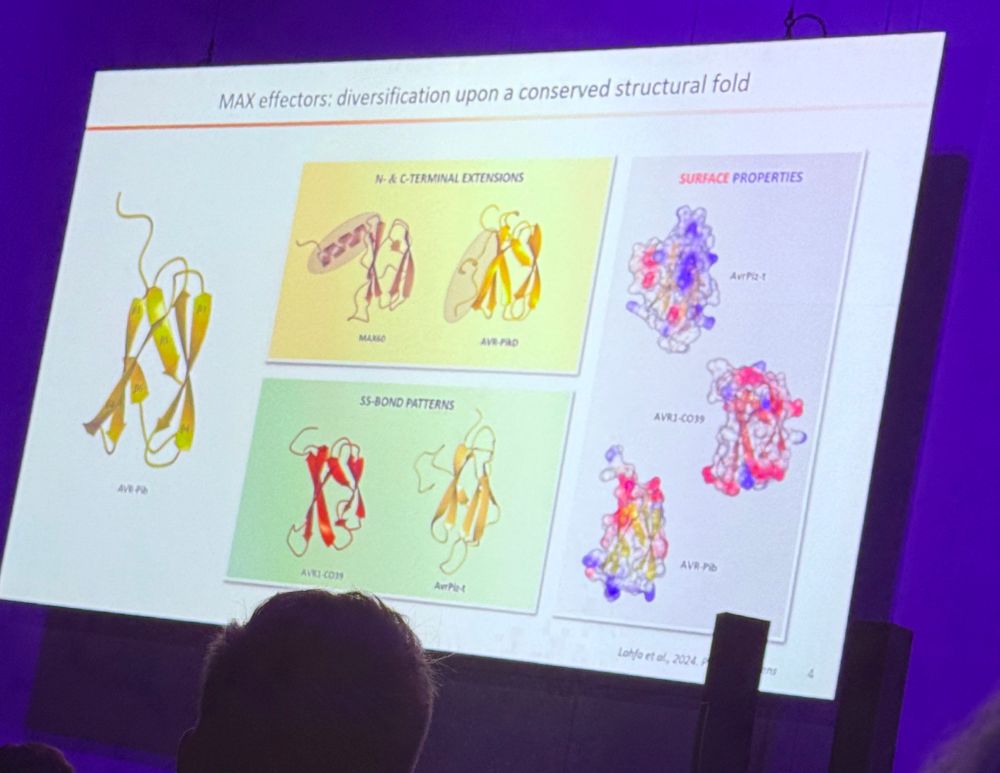
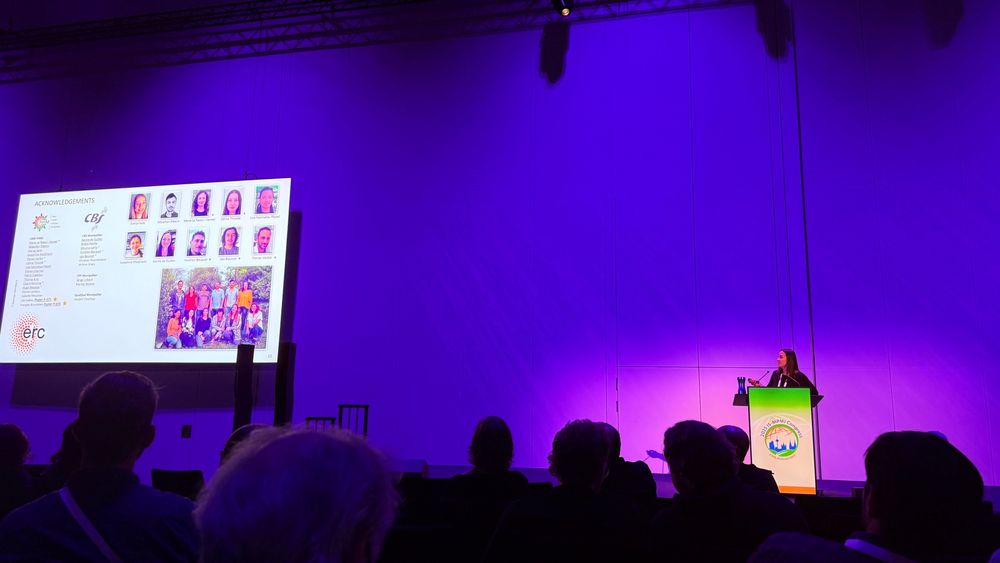
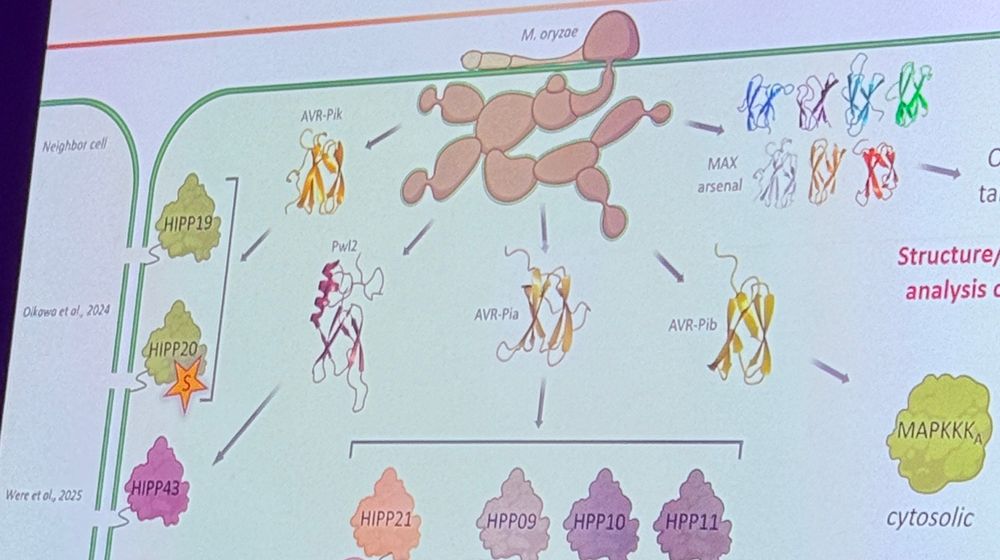
Stunning talk by Dr. Stella Cesari (PHIM, Univ. Montpellier):
MAX effectors—structurally conserved but sequentially diverse.
Beyond HIPPs, AVR-Pib hits MAPKKKs—key players in plant immunity.
One fold, many targets?
#ISMPMI2025 #MAXeffectors #MAPKKK #PlantImmunity
@cbsmontpellier.bsky.social
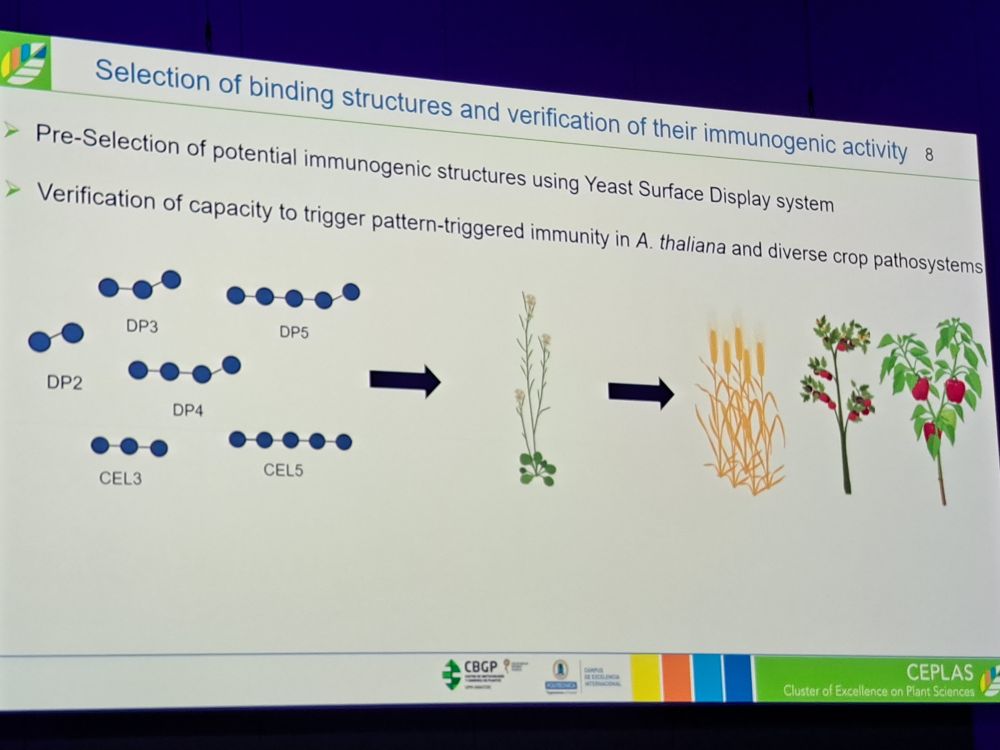
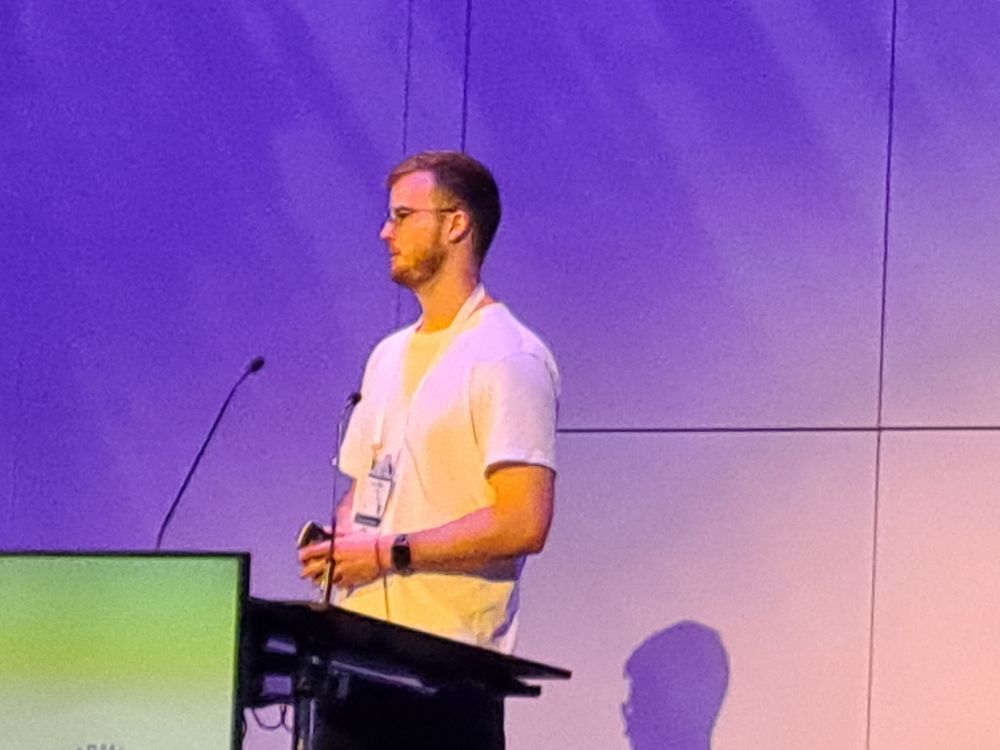
#2025ISMPMI Benjamin Menn presents an elegant yeast surface displace screen to identify new carbohydrate binding receptors of plants.
17.07.2025 09:56 — 👍 3 🔁 1 💬 0 📌 0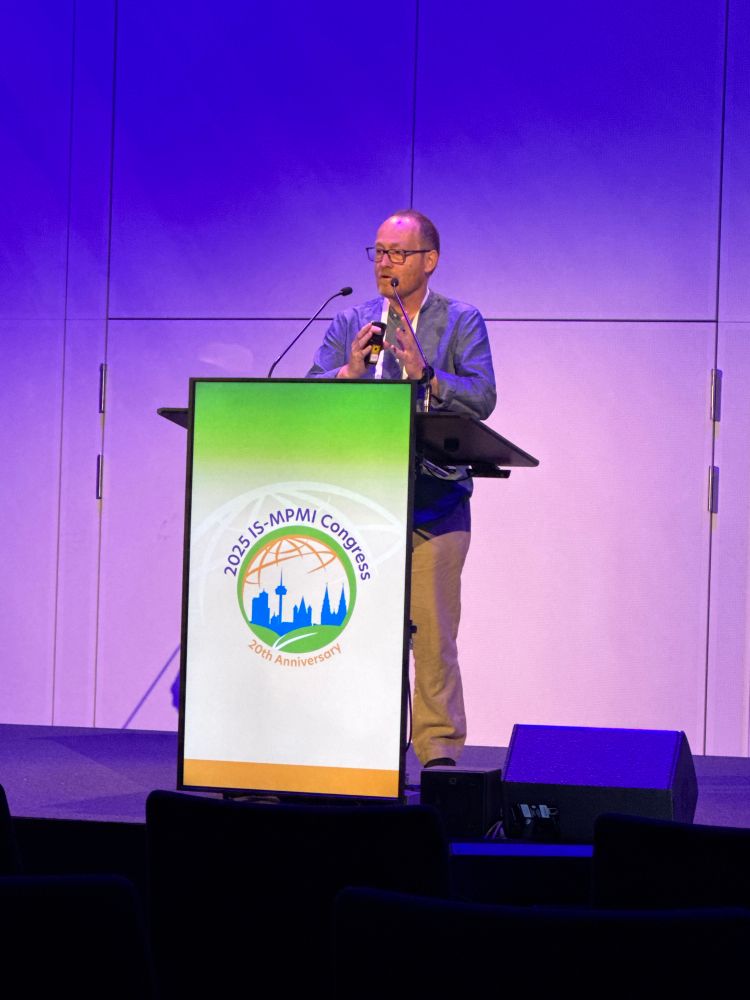
A man giving a talk at a lectern with an MPMI logo
Luis Rubio moves us from thinking about engineering against pathogens to engineering for nitrogen fixation.
They moved Nif genes into yeast mitochondria! But can this work in plants? Insolubiluty is the issue.
Screened variants by expressing in N benth - found one. Works in rice too!
#2025ISMPMI
"LRRs are slinkys, and slinkys are circles" Thank you math! #2025ISMPMI
17.07.2025 09:32 — 👍 2 🔁 1 💬 0 📌 0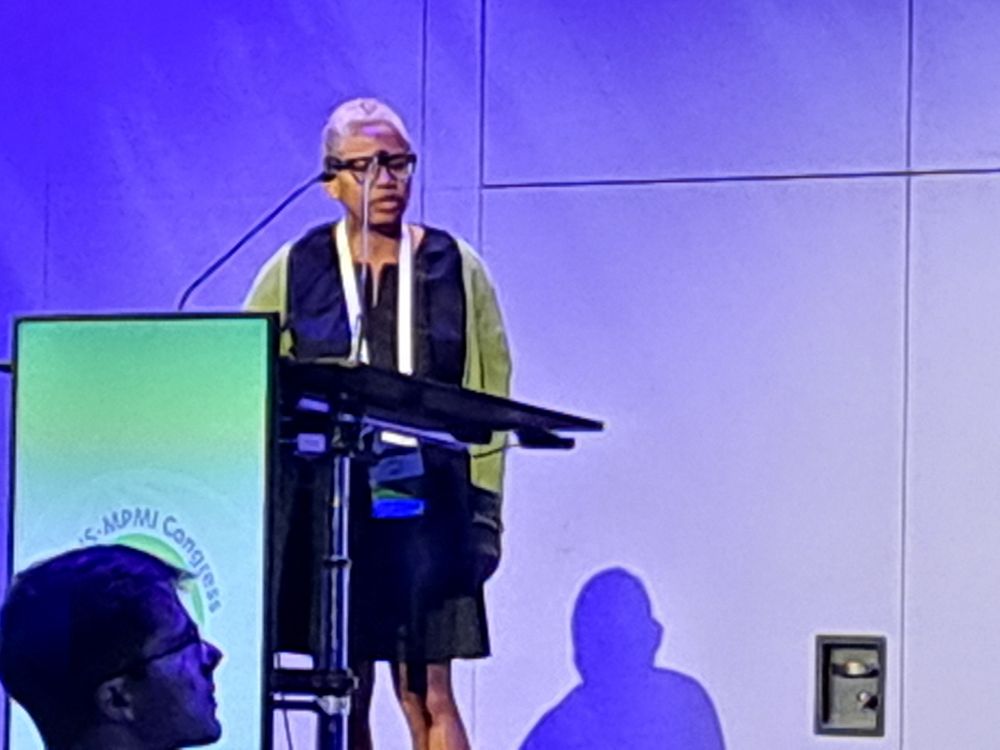
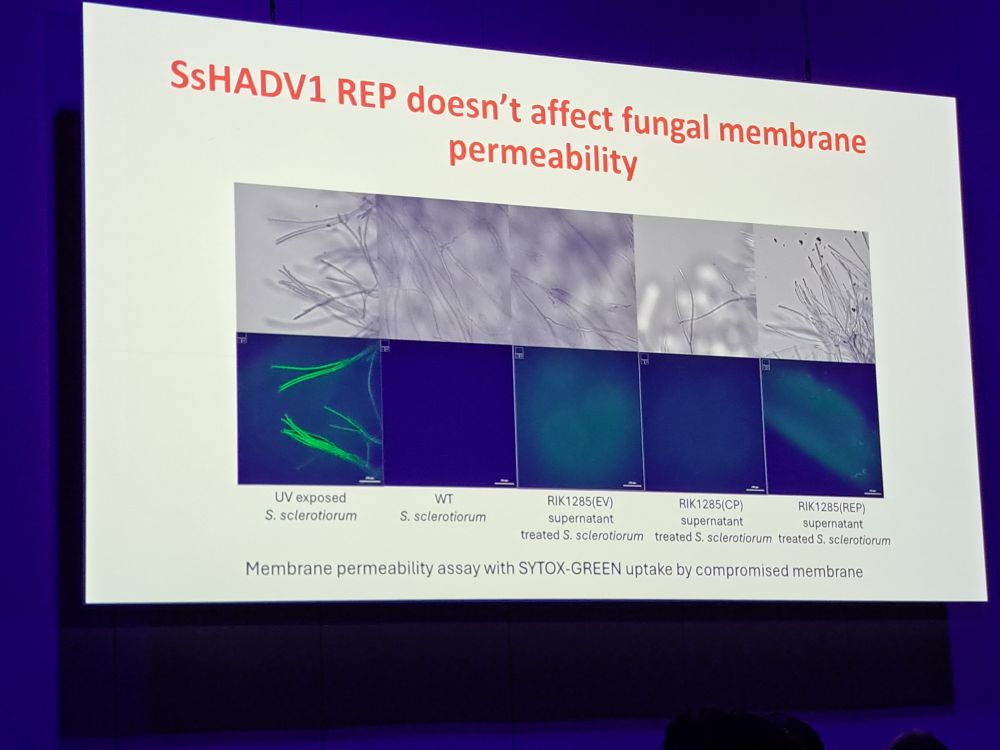
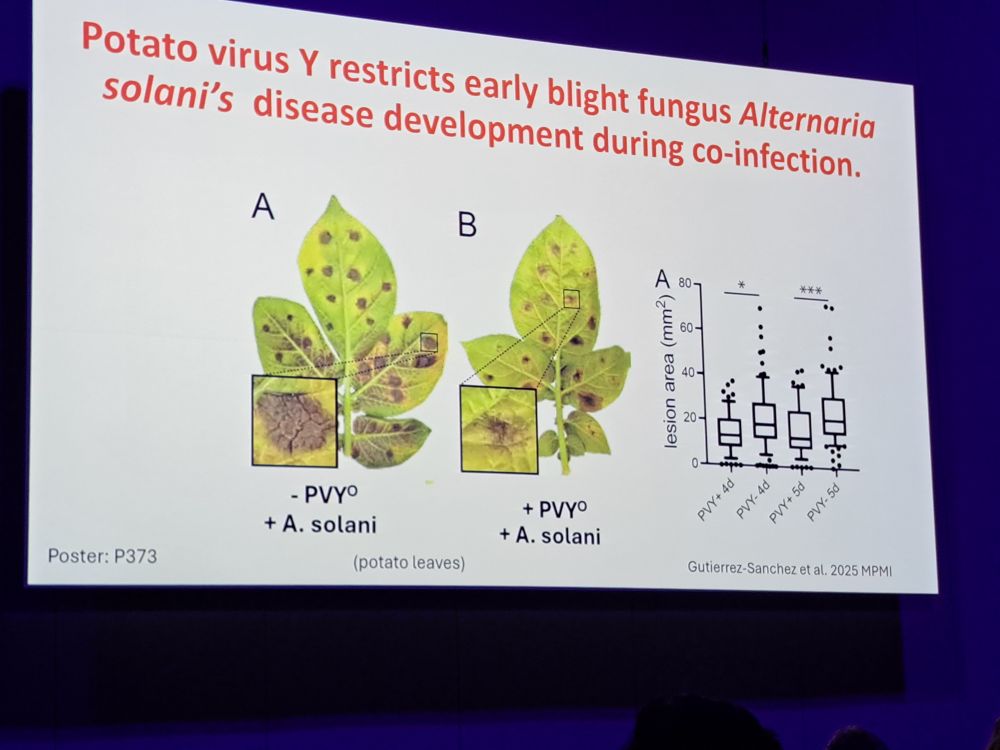
#2025ISMPMI Aurelie Rakotondrafara shows very interesting effects of mycovirus infection of Sclerotinia on virulence on the host plant. Take home to use mycoviruses and plant viruses to limit the spread of fungal pathogens.
17.07.2025 09:21 — 👍 3 🔁 1 💬 0 📌 0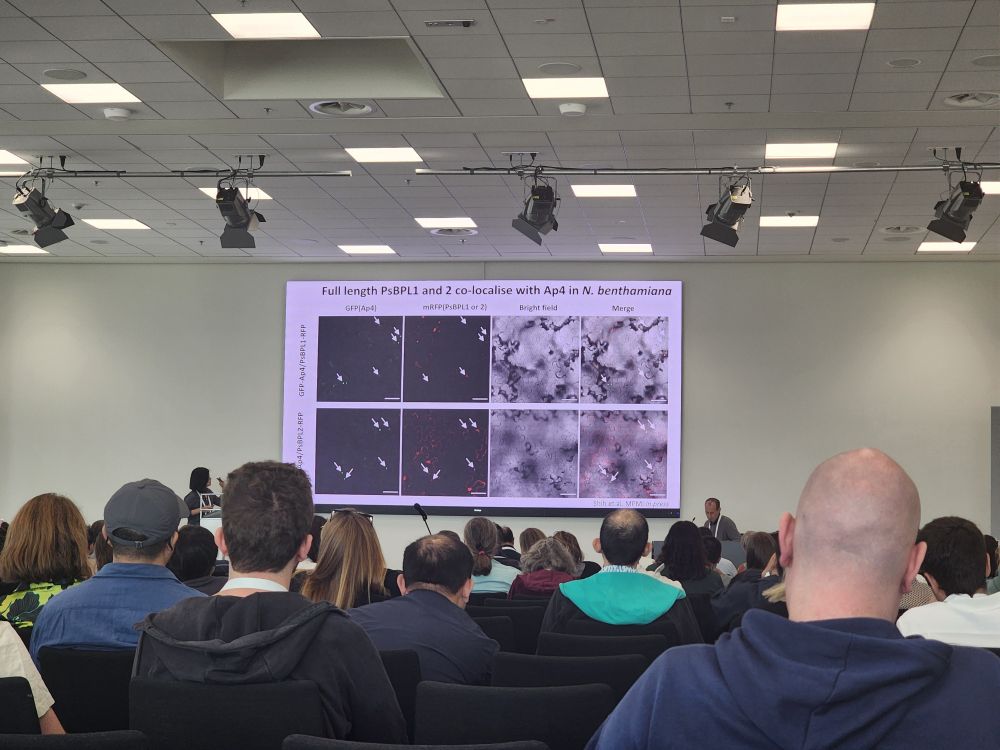
Po-Yuan Shih on aphid salivary protein Ap4 targeting PsBPL1/2 to increase aphid fecundity on a biotype-specific manner. She also highlights the pain of transient expression on legumes and using our well established N. bethamiana system to get at some mechanism #2025ISMPMI
17.07.2025 09:28 — 👍 1 🔁 1 💬 0 📌 0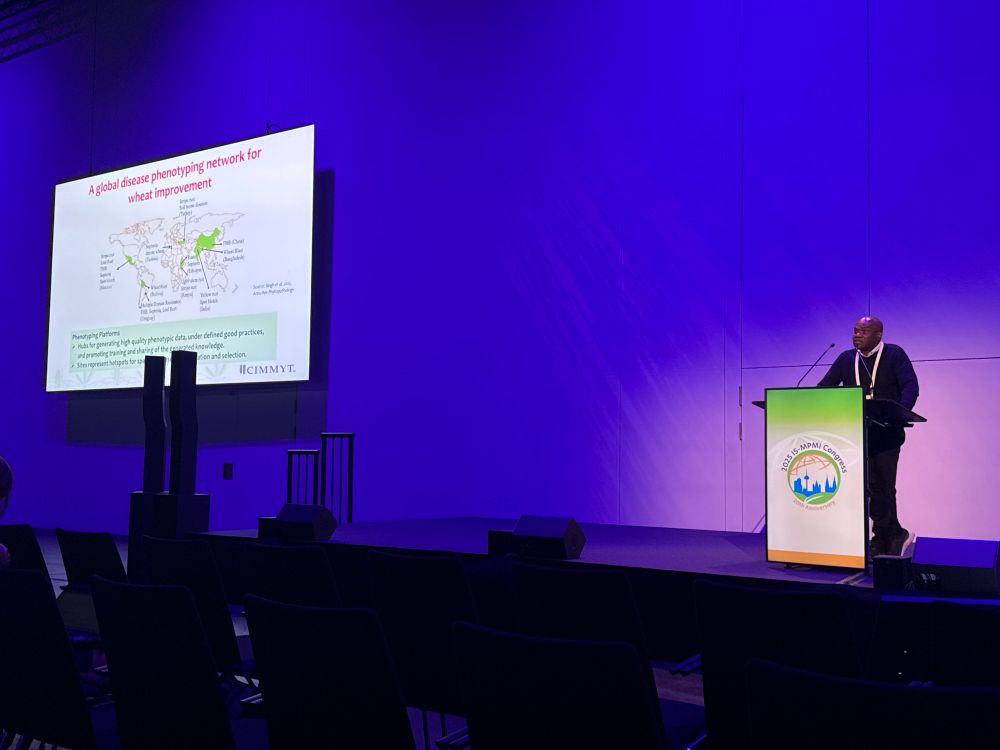
A man presenting at a lectern with an MPMI logo. To the side a PowerPoint slide shows the CIMMYT global phenotyping network for wheat improvement
Evans Lagudah taking a global perspective on improving wheat, highlighting CIMMYT’s phenotyping network for wheat.
He calls for the community to use MPMI knowledge more directly to improve crop outcomes.
#2025ISMPMI
Last day of #2025ISMPMI begins with Renier van der Hoorn and the amazing work on glycosirin, a bacterial inhibitor of BGAL1 that acts to manipulate plant glycobiology at the apoplast to evade recognition!
17.07.2025 06:35 — 👍 3 🔁 0 💬 0 📌 0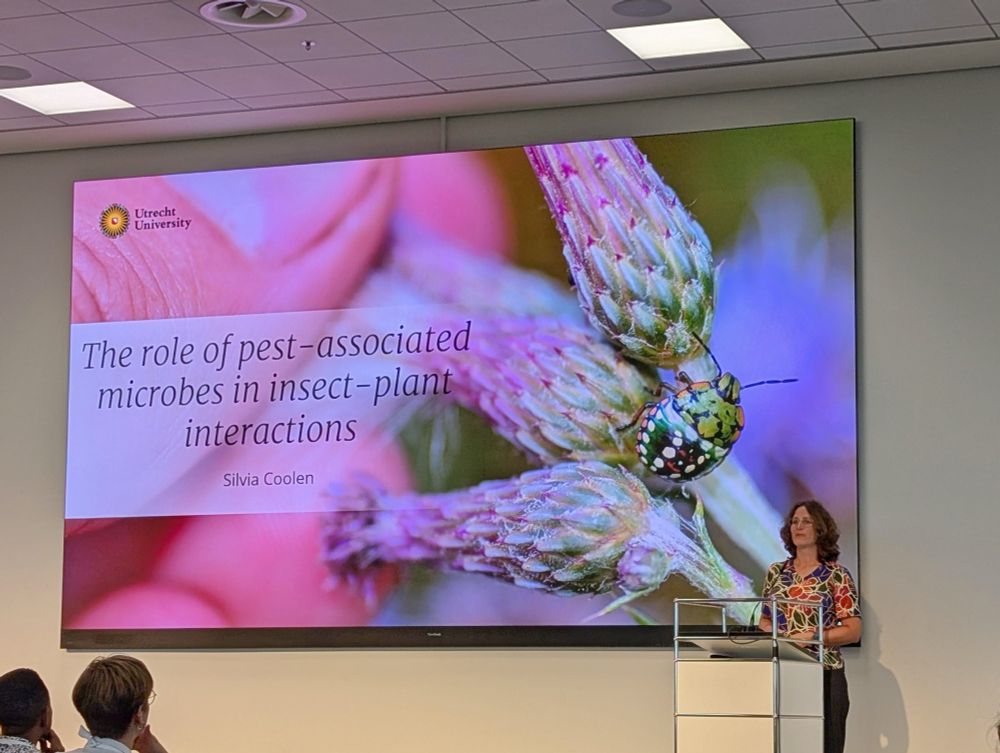
It was a pleasure to present our work on ‘the role of pest-associated microbes in insect-plant interactions’ at the #2025ISMPMI congress in Cologne. @mrogowska.bsky.social, @cuwelte.bsky.social, @robertsjansen.bsky.social, @guidopmi.bsky.social
16.07.2025 15:44 — 👍 27 🔁 6 💬 2 📌 0